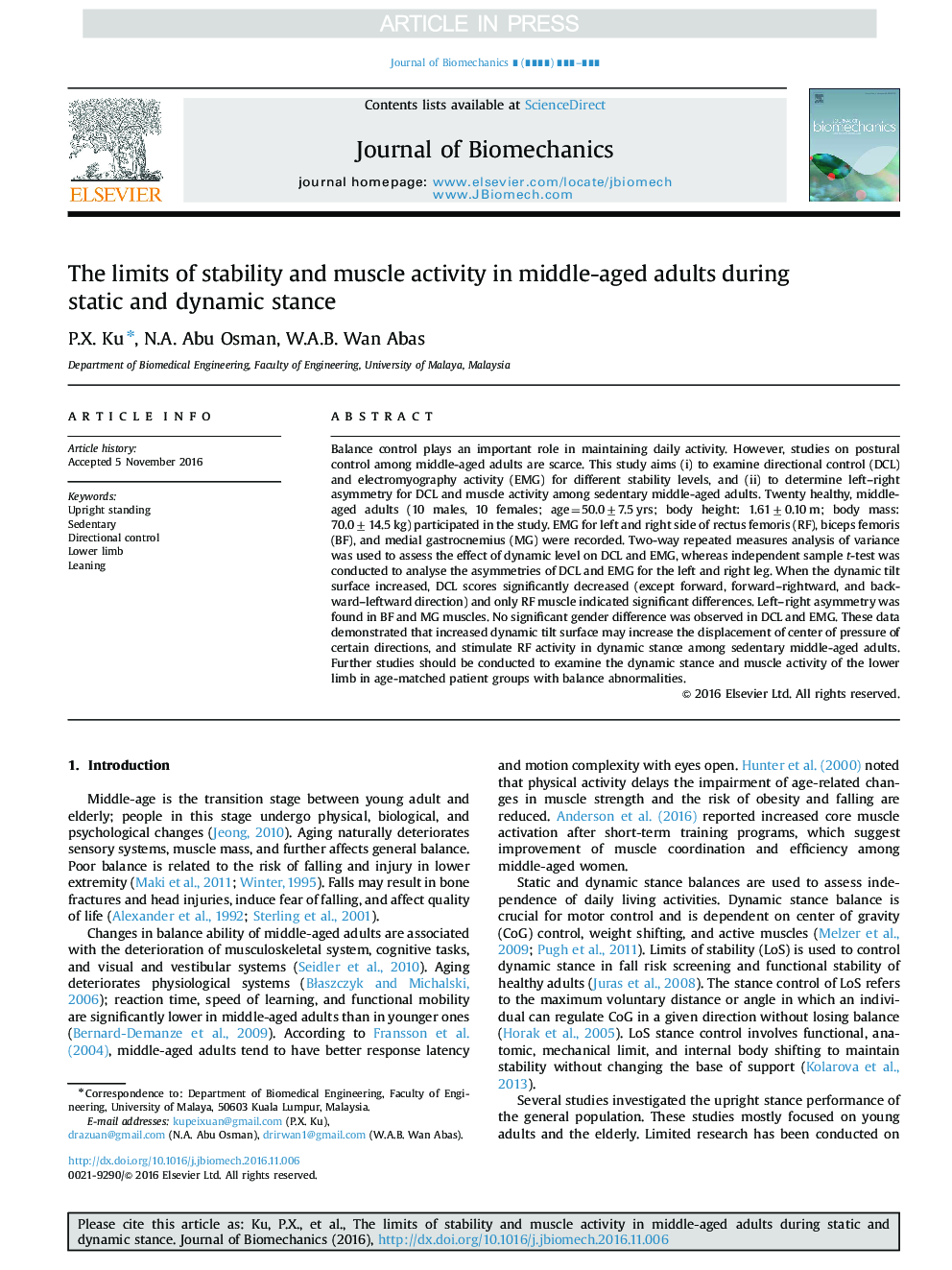| Article ID | Journal | Published Year | Pages | File Type |
|---|---|---|---|---|
| 5032296 | Journal of Biomechanics | 2016 | 6 Pages |
Abstract
Balance control plays an important role in maintaining daily activity. However, studies on postural control among middle-aged adults are scarce. This study aims (i) to examine directional control (DCL) and electromyography activity (EMG) for different stability levels, and (ii) to determine left-right asymmetry for DCL and muscle activity among sedentary middle-aged adults. Twenty healthy, middle-aged adults (10 males, 10 females; age=50.0±7.5 yrs; body height: 1.61±0.10 m; body mass: 70.0±14.5 kg) participated in the study. EMG for left and right side of rectus femoris (RF), biceps femoris (BF), and medial gastrocnemius (MG) were recorded. Two-way repeated measures analysis of variance was used to assess the effect of dynamic level on DCL and EMG, whereas independent sample t-test was conducted to analyse the asymmetries of DCL and EMG for the left and right leg. When the dynamic tilt surface increased, DCL scores significantly decreased (except forward, forward-rightward, and backward-leftward direction) and only RF muscle indicated significant differences. Left-right asymmetry was found in BF and MG muscles. No significant gender difference was observed in DCL and EMG. These data demonstrated that increased dynamic tilt surface may increase the displacement of center of pressure of certain directions, and stimulate RF activity in dynamic stance among sedentary middle-aged adults. Further studies should be conducted to examine the dynamic stance and muscle activity of the lower limb in age-matched patient groups with balance abnormalities.
Related Topics
Physical Sciences and Engineering
Engineering
Biomedical Engineering
Authors
P.X. Ku, N.A. Abu Osman, W.A.B. Wan Abas,
